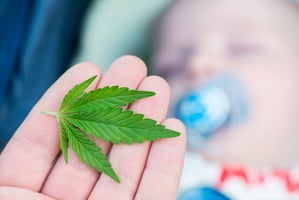The prevalence of fetal alcohol syndrome in the United States may be much higher than previous...
Safest Course to Prevent Fetal Alcohol Syndrome: No Drinking in Pregnancy
 |
Children born with fetal alcohol spectrum disorder (FASD) or its variants are more likely than the general population to develop concurrent psychiatric, emotional, and behavioral problems, according to the lead authors Janet Williams, M.D., of the University of Texas Health Science Center in San Antonio and Vincent Smith, M.D., M.P.H., of Boston Children’s Hospital.
“Children and adolescents with FASD have a 95% lifetime likelihood to experience mental health issues, and among the most prevalent are anxiety and mood disorders, particularly depression, as well as ADHD, substance use, addiction, and suicide,” they wrote.
The structural and functional effects of prenatal exposure to alcohol on the brain may also be accompanied by problems in other organ systems, including the heart, kidneys, eyes, ears, and musculoskeletal system.
“Multimodal symptom treatments that improve long-term outcomes [for FASD] include optimizing environmental modifications, parenting strategies, social support, and developmental and educational interventions that address the neurologically based problems related to FASDs,” wrote the authors. Far better than treatment, the experts note, is prevention, however.
“The research suggests that the smartest choice for women who are pregnant is to just abstain from alcohol completely,” Williams said in a press release.
For more information about fetal alcohol syndrome, see the Psychiatric News article “ Growing Recognition of Prevalence of Disorders Brought on by Prenatal Alcohol Exposure .”
(Image: Maminau Mikalai/Shuttertock)





